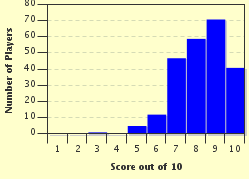Quiz Answer Key and Fun Facts
1. The statue of the Sphinx is one of the world's most famous statues. What is said to have happened to the nose that was once on the Sphinx?
2. Some statues commemorate not people but also animals.
True or False: In London, there is a war memorial dedicated to animals that lost their life serving in the British armed forces.
3. The Statue of Liberty stands in New York Harbour. What gives the statue its green colour?
4. This statue is of which Soviet leader, who took part in the Russian Revolution of 1917?
5. Situated by the banks of the River Thames in London is a statue of which famous British queen?
6. Located in the south-eastern part of the Pacific Ocean lies an island known as Rapa Nui which has a large number of stone statues located around the island. By what festive name is the island better known?
7. Sitting on a rock off the shoreline of Copenhagen is a statue of a woman from which story by Hans Christian Andersen?
8. Housed in a museum in Florence, Italy is one of the world's most famous statues carved by the Italian artist, Michelangelo. Which biblical figure from the Old Testament does the statue depict?
9. Is the statue in the photo that of Buddha, the founder of Buddhism?
10. The statue of Christ the Redeemer stands on a small mountain overlooking which South American city?
Source: Author
mcsurfie
This quiz was reviewed by FunTrivia editor
stedman before going online.
Any errors found in FunTrivia content are routinely corrected through our feedback system.

